Islamic shrines 🢔 Religious architecture 🢔 Architectural wonders 🢔 Categories of wonders
Wonder
Al-Aqsa Mosque
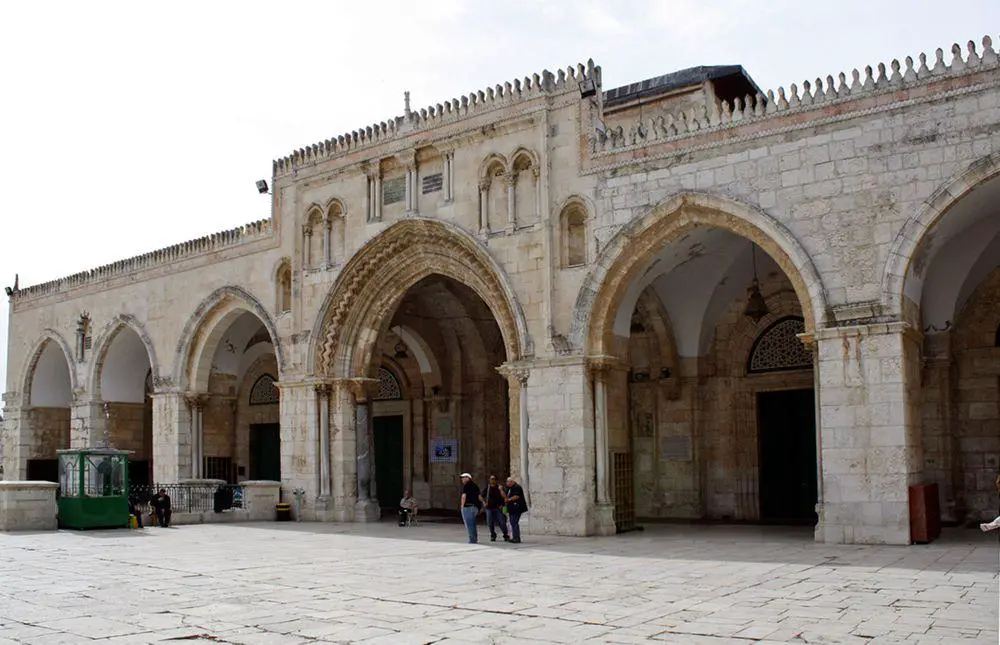
 In short
In short
There are few buildings, which have very special importance in the history of the world. One of them is Al-Aqsa Mosque in Jerusalem.
 56.1%
56.1%
GPS coordinates
Alternate names
Construction time
Religion
UNESCO World Heritage status
Map of the site
If you see this after your page is loaded completely, leafletJS files are missing.
 In detail
In detail
This old structure stands on the most sacred land of Jewish people, next to the fundament of the Second Temple. This is the third most important shrine of Muslims (after Masjid al-Haram in Mecca and Al-Masjid al-Nabawi in Medina) and is considered to be the second oldest mosque in the world.
And last but not least – the old temple served as the headquarters of the famous Knights Templar, who got their name thanks to this location.
History
Temple Mount
Al-Aqsa Mosque stands on Temple Mount – a place which in many respects is a true "navel of the world".
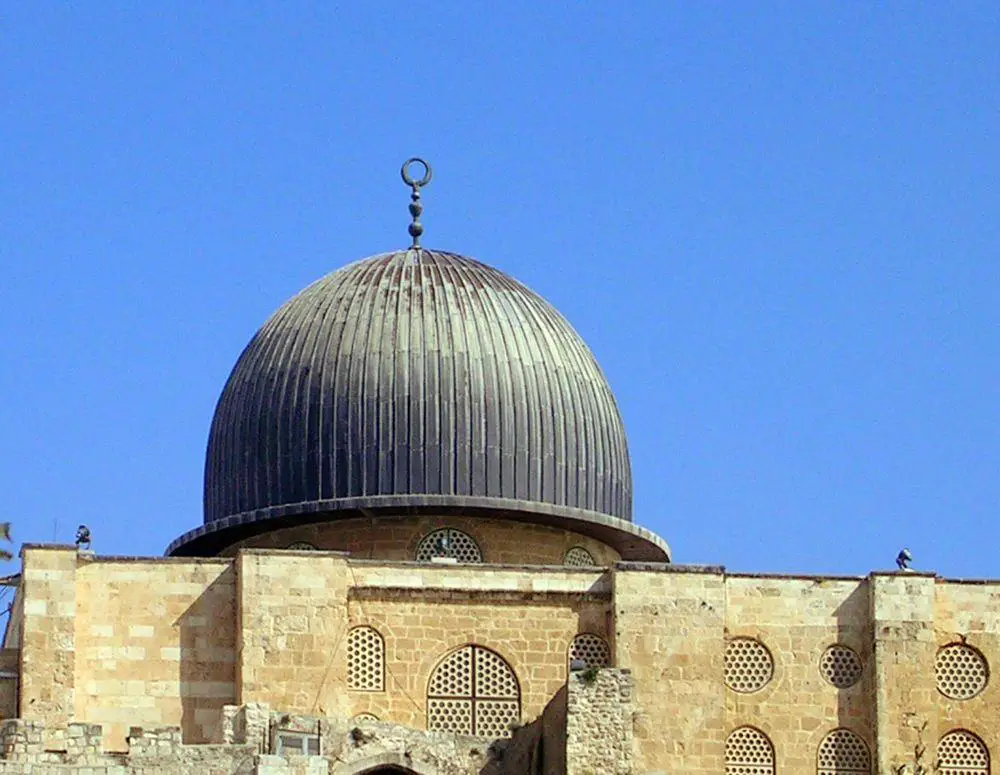
Temple Mount is a limestone hill, which for many millennia has served as a religious site for several major religions, including Judaism, Islam, Christianity, and Roman paganism – but most likely also for more ancient, forgotten religions (e.g. Jebusite religion). People have built here many temples and the hill is crisscrossed with underground passages. This is a place with many riddles of history that may never be solved.
Jewish Temples and Christian church
The legendary First (Solomon’s) Temple was built by Israelites on Temple Mount around the 10th century BC. It was demolished by Babylonians in 587 BC.
Jews had an opportunity to build their next temple – the Second Temple – around 516 BC. It was built on the site of the First Temple and experienced major rebuilding by Herod the Great around 20 – 19 BC when the whole Temple Mount was reshaped and ultramodern infrastructure (by the standards of those times) was developed around it. In fact, Al-Aqsa Mosque stands on an artificial platform with underground premises under it (Solomon’s Stables).
On the site of present-day Al-Aqsa Mosque was located Royal Stoa – a kind of public office building in the Roman Empire. According to the Bible, Jesus threw out the money changers from Stoa as it was located in the area of the temple.
The Second Temple with Royal Stoa was also destroyed – Romans leveled it during the oppression of Jewish revolt in 70 AD.
After 530 AD there was built Byzantine Church of Our Lady. It was destroyed by Arabs in the early 7th century AD.
First Al-Aqsa Mosque
Arabs conquered Jerusalem in 638 AD. Soon in the southern part of the Temple Mount was built a simple mosque – a predecessor of the current mosque.
In 691 AD a large mosque – the Dome of the Rock – was built nearby. This is an imposing structure with a golden dome upon an octagonal structure, which stands almost unchanged up to this day and is one of the most memorable landmarks in Jerusalem. It stands over the rock, where Muhammad ascended to heaven.
Some years later, in 696 – 705, in the times of Khalif Abdul-Malik and his son Al Walid I the southern mosque was rebuilt and expanded. It got the name from its location – Al-Aqsa means "the farthest", "remote".
Mosque was commemorated to Muhammad’s imaginative night travel with the legendary Buraq from Mecca to (most likely) Jerusalem. As the Qur’an writes: "Glory be to Him Who made His servant to go on a night from the Sacred Mosque to the remote mosque of which We have blessed the precincts, so that We may show to him some of Our signs; surely He is the Hearing, the Seeing."
The first Al-Aqsa Mosque was destroyed in a great earthquake in 749 and restored in 771, then again destroyed by the next earthquake in 774 and rebuilt again in 780 AD.
Another devastating earthquake took place in 1033 – and already in 1034 – 1036 there was built the present day structure.
Headquarters of Knights Templar
In 1099 Jerusalem was invaded by Europeans – Crusaders. Al-Aqsa Mosque was turned into a prayer house and then in 1104 – into the royal palace of Baldwin I, when it was named King Solomon’s palace (also – Solomon’s Temple).
Sometimes around 1118 – 1120 Al-Aqsa Mosque started to serve as a headquarters for a new Christian military order, which soon was named – Poor Knights of Christ and the Temple of Solomon or shorter – Templar knights.
Most likely we will never know whether this rise to power was accidental or some millennia-old secrets of the Temple Mount were revealed to Knights Templar – but soon the order became the most influential and powerful organization in the whole Christian world.
Thus even more mystical flavor was added to this building in the eyes of Europeans.
Return of Islam
In 1187 Saladin drove out the Crusaders from the Holy Land and Al-Aqsa Mosque was returned to Muslims. The building was quickly refurbished into a shrine and in the coming centuries, the mosque was extended and modified.
Since then mosque has served as a shrine to Muslims and as an exotic tourist attraction – to people of other faiths.
In the 20th-century mosque was renovated. Unfortunately, in the 20th and the early 21st century, Al-Aqsa Mosque has been at the center of fierce conflict between the Islam world and Jewish extremists.
Today this area is governed by Israel, but the building is managed by wakf which is a Muslim governing authority.
Muslims access the mosque from the Temple Mount. People of other faiths access it through the Mugrabi gate – and only in hours between the prayers.
Architecture and art
Al-Aqsa Mosque is located at the southern rim of Temple Mount – its southern side forms a part of the southern wall of the Temple Mount. This is a large, 83 m long, and 56 m wide building.
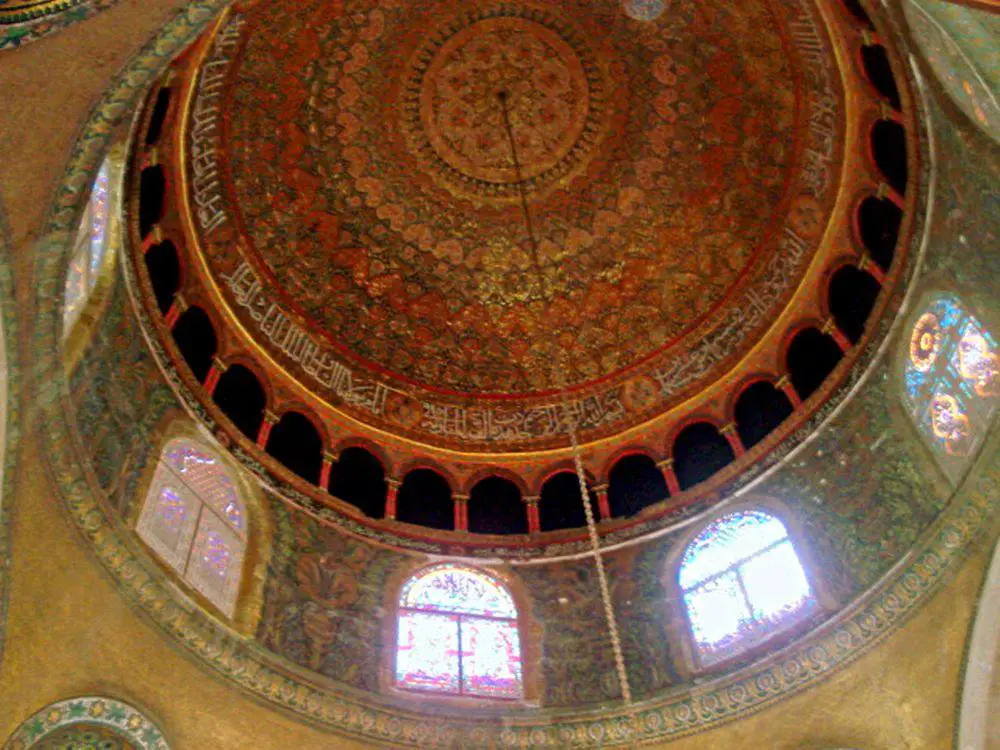
Knight Templars built annexes to the mosque – the annex to the west now serves as a women’s prayer hall and the annex to the east since 1927 is the Islamic Museum.
Dome
The main dome of the mosque is made of wood, which is plated with lead. Its interior is adorned with the 14th century paintings.
Minarets
Mosque has four minarets. The oldest is al-Fakhariyya Minaret in the southwest, which was built in 1278.
Ghawanima minaret – the northwest minaret – was built in 1297 – 1298. This is the tallest of the four.
Bab al-Silsila Minaret – the western minaret – was built in 1329 or shortly after.
Minarat al-Asbat was built in 1367. This cylindrical tower is visually the most interesting one of the four.
Interior
Al-Aqsa Mosque’s interior is characteristic of the great early mosques. The roof is supported by columns with arches – in total 45 columns.
The decoration of the mosque is rich but not sumptuous – part of it is whitewashed, but some parts of walls and the dome are adorned with mosaics and paintings, and there are 121 stained glass windows.
Reused materials
Al-Aqsa Mosque contains much older parts. Some wooden details in the mosque are from trees that were cut… in the 9th century BC – e.g. are some 2000 years older than the mosque!
Solomon’s Stables
12.5 m deep under the mosque are located large underground premises – Solomon’s Stables (a name given by Crusaders). Area of this vaulted space is 500 m², and it has 12 rows of pillars and arches.
This unique structure was built mostly in the times of Herod as a (possibly) storage capacity for the temple. When the mosque was built, Solomon’s Stables were reinforced to serve as a firm fundament for the mosque. Only in the times of Knights Templar this void was adjusted for use as a stable and got its current name.
 Linked articles
Linked articles
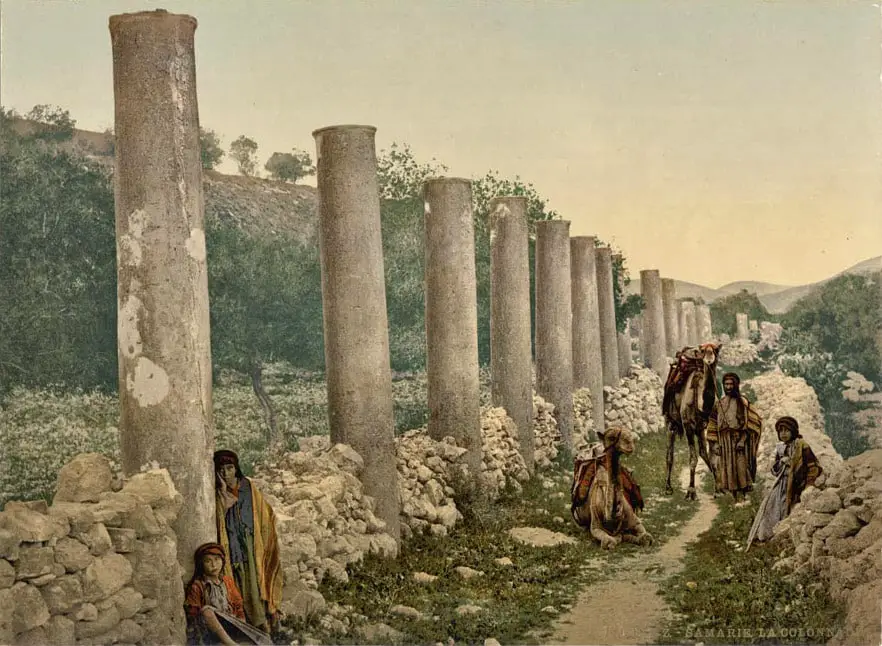
Wonders of Palestine
Palestinian territories (or better simply – Palestine) has very special landmarks. This land has experienced the birth of Judaism and Christian religions and plays a very important role also for Muslims. Billions of people see this land as the place of divine presence, with many sites linked to events of extremely high importance for believers and historians.
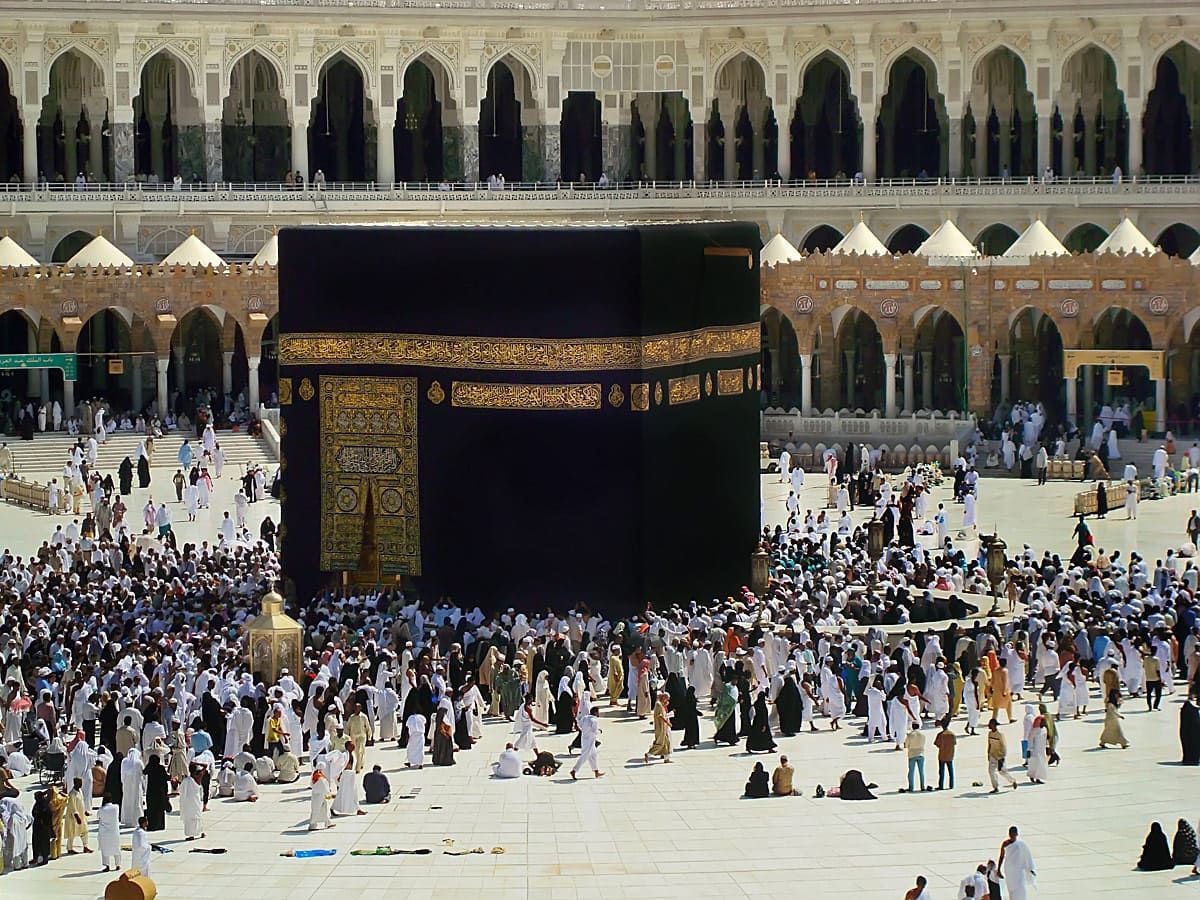
Islamic shrines
Place for worship in Islam is called a mosque. Mosques serve also for education, news exchange, and dispute settling.
Initially, in the 7th century mosques were unpretentious, large halls for gatherings. Over time, as Islam was spreading, there developed diverse, locally adapted architectural forms of mosques.
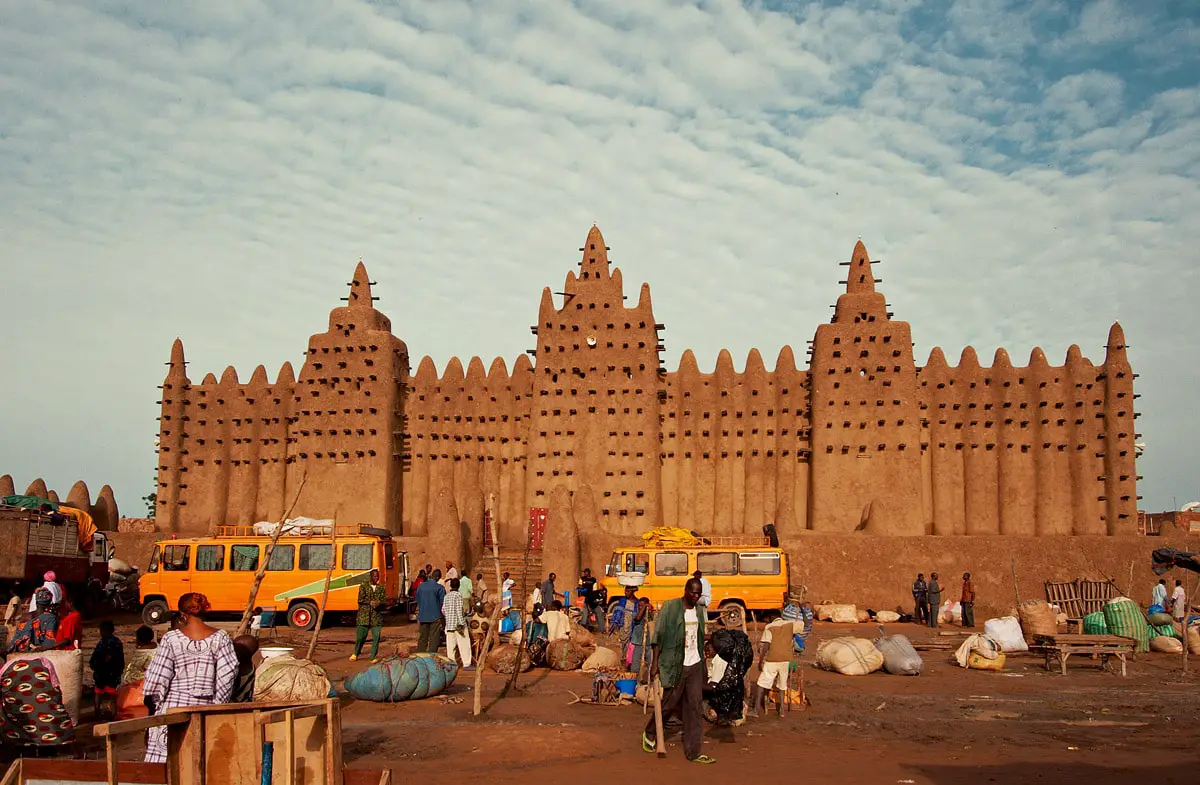
Religious architecture
Since ancient times human talents and skills have been expressed in religious architecture and arts, and traditions and rituals have evolved around pilgrimage sites. Religious buildings represent a major part of the highest achievements in architecture and crafts.
 Recommended books
Recommended books
Jerusalem: One City, Three Faiths
Venerated for millennia by three faiths, torn by irreconcilable conflict, conquered, rebuilt, and mourned for, again and again, Jerusalem is a sacred city whose very sacredness has engendered terrible tragedy.
Jerusalem: The Illustrated History of the Holy City
Jerusalem’s rich history stretches back more than two millennia, and three great religions claim the city as holy ground. This lavishly illustrated book celebrates Jerusalem, from its ancient origins to the present day, focusing on such key sites as the Western Wall, the Church of the Holy Sepulchre, and the Al-Aqsa Mosque, and pivotal moments like the Six-Day War.

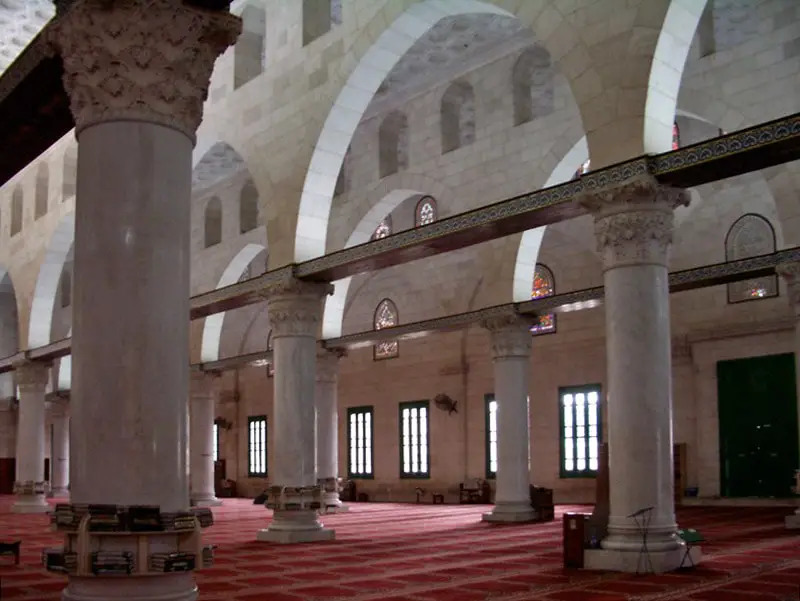


Soon this wonder of the world may be gone forever, demolished by Israel for the construction of Third Temple.